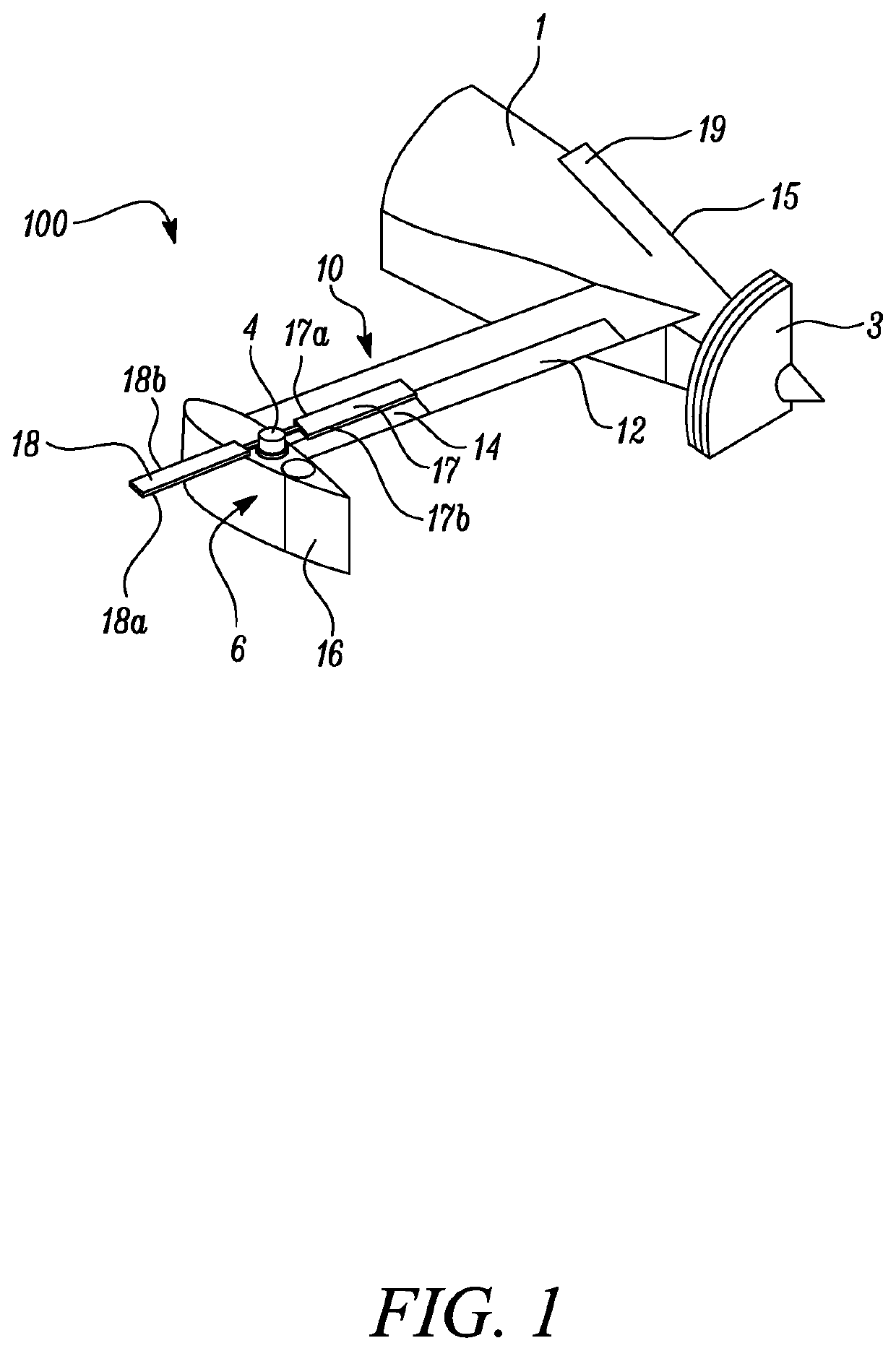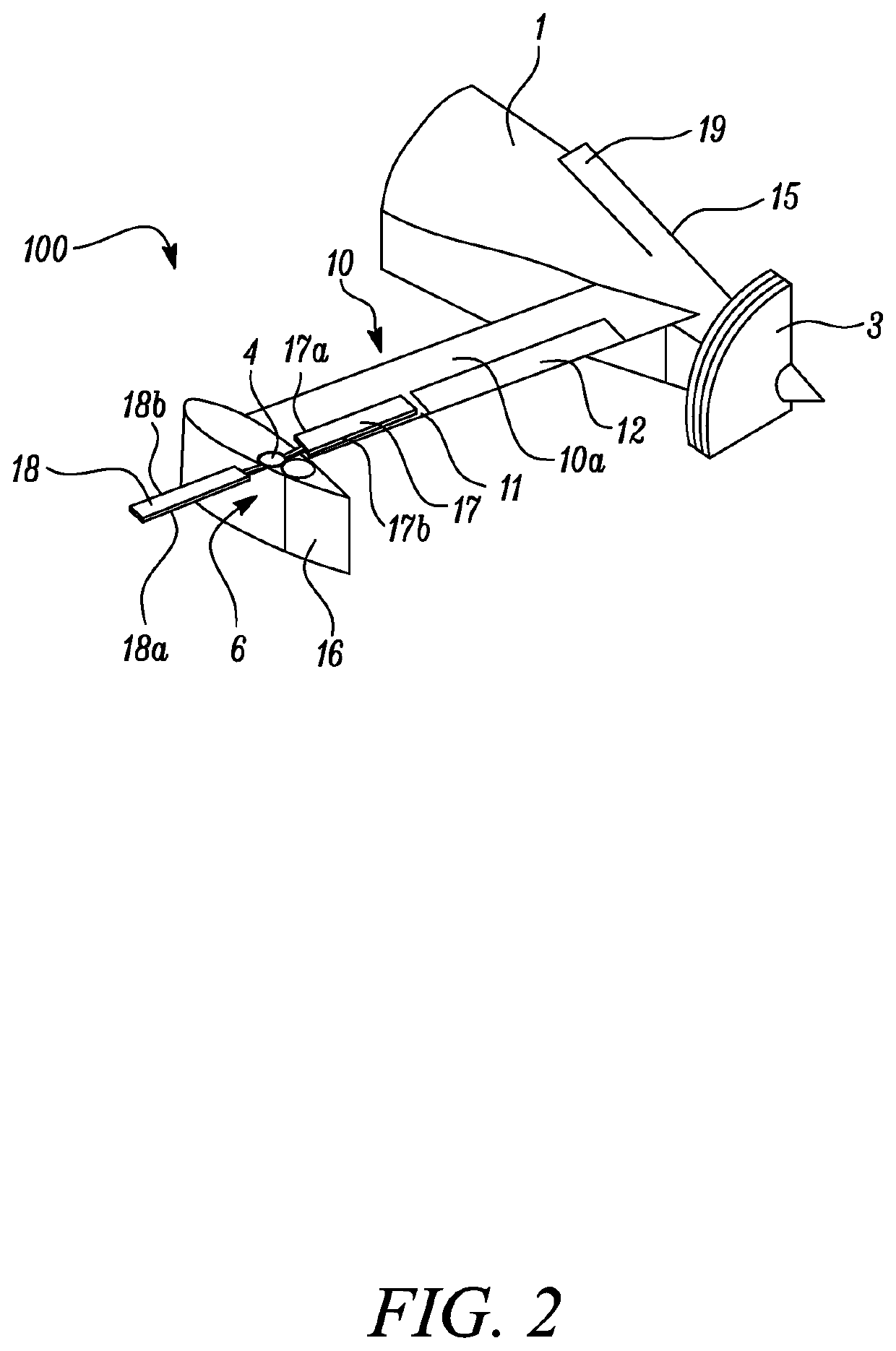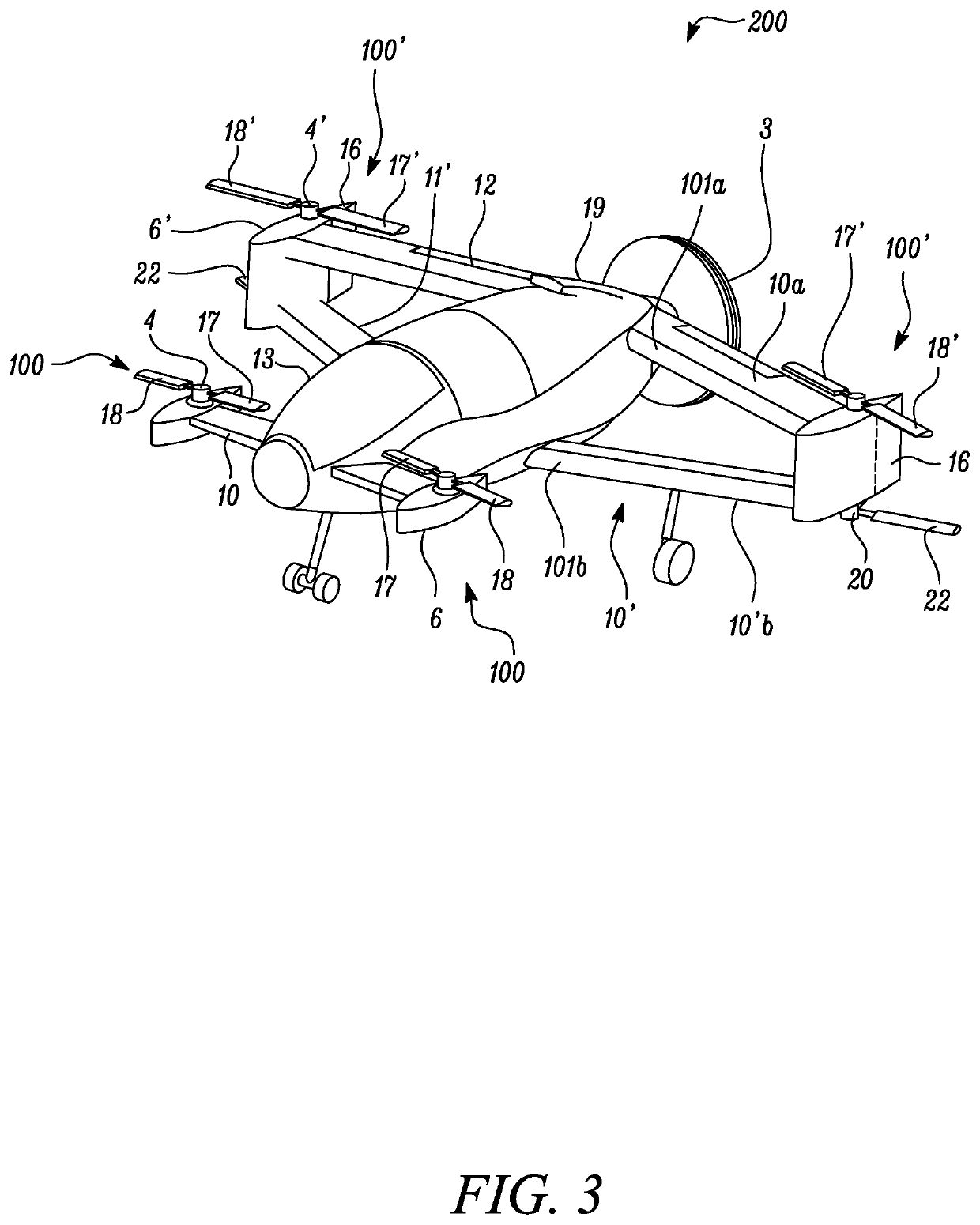Lift rotor system
a rotor system and rotor technology, applied in the direction of canard-type aircraft, vertical landing/take-off aircraft, transportation and packaging, etc., can solve the problems of aircraft performance compromise, associated penalties in range and/or payload capability, etc., to reduce the amount of lift the rotor can generate, rotate more slowly, and reduce the effect of lifting
- Summary
- Abstract
- Description
- Claims
- Application Information
AI Technical Summary
Benefits of technology
Problems solved by technology
Method used
Image
Examples
Embodiment Construction
[0048]Aspects and embodiments of the present disclosure will now be discussed with reference to the accompanying figures. Further aspects and embodiments will be apparent to those skilled in the art.
[0049]FIG. 1 shows a first embodiment of a lift rotor arrangement 100 for a VTOL aircraft in the extended position.
[0050]The lift rotor arrangement 100 comprises an aerodynamic fairing 6 mounted on the tip of a wing segment 10. The fairing 6 comprises a rearward rudder portion 16. The lift rotor arrangement also includes a first rotor blade 17 and second rotor blade 18 mounted on a first shaft 4 extending vertically from the fairing 6.
[0051]In the extended position when vertical thrust is required for vertical take-off, the first shaft 4 is vertically extended away from the fairing 6 by an electric motor (not shown) housed within the fairing 6. In this extended position, the first and second blades 17, 18 are spaced away from the wing segment 10 and are free to rotate with the first shaf...
PUM
 Login to View More
Login to View More Abstract
Description
Claims
Application Information
 Login to View More
Login to View More - R&D
- Intellectual Property
- Life Sciences
- Materials
- Tech Scout
- Unparalleled Data Quality
- Higher Quality Content
- 60% Fewer Hallucinations
Browse by: Latest US Patents, China's latest patents, Technical Efficacy Thesaurus, Application Domain, Technology Topic, Popular Technical Reports.
© 2025 PatSnap. All rights reserved.Legal|Privacy policy|Modern Slavery Act Transparency Statement|Sitemap|About US| Contact US: help@patsnap.com



